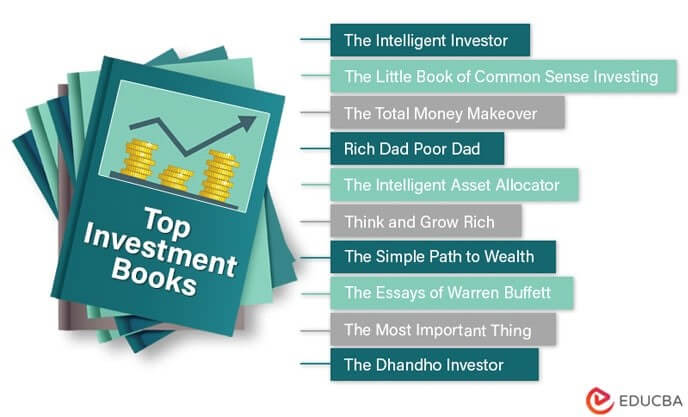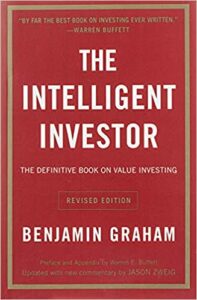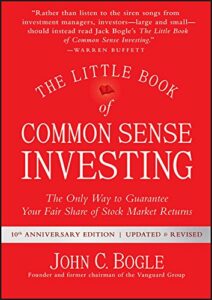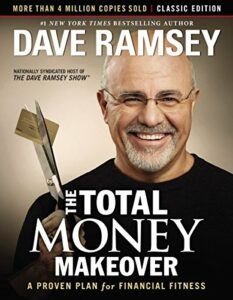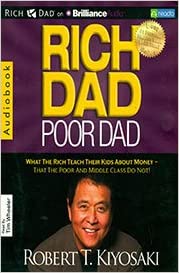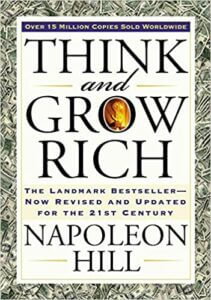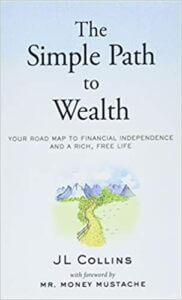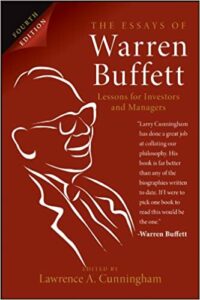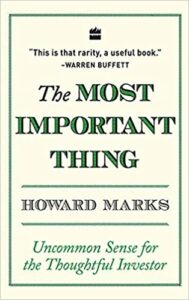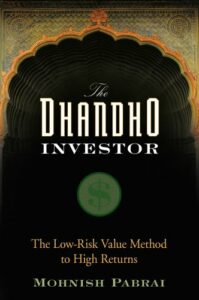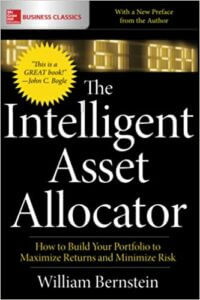Best Books to Learn Investment
Investments can take many forms, including stocks, bonds, real estate, and businesses. The goal of an investment is to put money to work today and expect to get more money back in the future. The return on investment (ROI) is the amount of money earned or lost on investment as a percentage of the initial investment. This list of Investment Books will help beginners and professionals to build a strong understanding of investment. Even young adults can start learning about investing at an early stage. These investment books have explanations and tips for readers to understand the concepts better.
Below is the list of top 10 investment books that will help beginners and professionals learn financial tips on investing.
|
# |
Investment Books | Author | Published |
Rating |
| 1 | The Intelligent Investor | Benjamin Graham | 2003 | Amazon: 4.5
Goodreads: 4.25 |
| 2 | The Little Book of Common Sense Investing | John C. Bogle | 2017
|
Amazon: 4.6
Goodreads: 4.16 |
| 3 | The Total Money Makeover | Dave Ramsey | 2013 | Amazon: 4.7
Goodreads: 4.23 |
| 4 | Rich Dad Poor Dad | Robert Kiyosaki | 2012 | Amazon: 4.5
Goodreads: 4.12 |
| 5 | Think and Grow Rich | Napoleon Hill | 2005 | Amazon: 4.5
Goodreads: 4.18 |
| 6 | The Simple Path to Wealth | JL Collins | 2016 | Amazon: 4.7
Goodreads: 4.45 |
| 7 | The Essays of Warren Buffett | Lawrence Cunninghum | 2013 | Amazon: 4.6
Goodreads: 4.30 |
| 8 | The Most Important Thing | Howard Marks | 2018 | Amazon: 4.5
Goodreads: 4.31 |
| 9 | The Dhandho Investor | Mohnish Pabrai | 2009 | Amazon: 4.4
Goodreads: 4.22 |
| 10 | The Intelligent Asset Allocator | William Bernstein | 2019 | Amazon: 4.5
Goodreads: 4.21 |
Let us now go through the Investment Books review in detail.
Book #1 The Intelligent Investor
Author: Benjamin Graham
Get this book here
Reviews:
The book is a classic in the field of value investing and is often considered a “bible” for value investors. It provides a comprehensive framework for analyzing stocks and bonds and is a must-read for anyone interested in long-term investing. It talks about investing as the process of buying assets that generate income or appreciate in value over time. The book also explains how speculation is the process of buying assets with the expectation of selling them at a higher price in the short term.
Key Points:
- The book explains the concept of margin of safety. The margin of safety is the difference between the intrinsic value of an asset and its market price. Graham suggests that investors should only buy assets when the margin of safety is large, as this provides a buffer against potential losses.
- Graham emphasizes the importance of diversifying one’s portfolio to minimize risk. He suggests that investors should not put all of their eggs in one basket and instead spread their investments across different sectors and industries.
- The author is also a proponent of value investing. It involves buying undervalued assets with the expectation that their true value will be realized over time. He argues that by focusing on value, investors can achieve long-term success while minimizing risk.
- The book discusses the role of psychology in investing and the importance of maintaining a rational and disciplined approach to investing. The author suggests that investors should avoid making decisions based on emotions or short-term market changes.
Book #2 The Little Book of Common Sense Investing
Author: John C. Bogle
Get this book here
Reviews:
The book is a guide to passive investing, which advocates investing in low-cost index funds as a way to achieve long-term investment success. He suggests that passive investing is a more efficient way to achieve the same. He also mentions that by investing investors can take advantage of the power of compounding to grow their wealth over time.
Key Points:
- Bogle emphasizes the importance of keeping investment costs as low as possible, as high costs can eat into investment returns over time.
- The author argues that passive investing, which involves investing in a broad market index, is a more effective strategy than actively trying to beat the market through stock picking or market timing.
- The book emphasizes the power of compounding, which is the process of earning interest on top of interest over time.
- Bogle warns against the dangers of chasing performance, which is the practice of trying to invest in the best-performing funds or stocks. He suggests that this approach is unlikely to lead to long-term success and can be a costly mistake.
Book #3 The Total Money Makeover
Author: Dave Ramsey
Get this book here
Reviews:
It is a personal finance book that provides a step-by-step plan for paying off debt and building wealth. Ramsey stresses the importance of creating a budget as a way to take control of one’s finances. He provides a step-by-step guide for creating a budget and suggests that readers should start by tracking their income and expenses to get a better sense of where their money is going.
Key Points:
- The book advocates for the use of the “debt snowball” method as a way to pay off debt. This method involves paying off debts starting with the smallest balance first, while still making minimum payments on larger debts, and rolling the payments from the smaller debt into the next one until all debts are paid off.
- Ramsey emphasizes the importance of having an emergency fund. He suggests that readers should aim to save at least three to six months of living expenses in case of unexpected events.
- The book also suggests that readers should invest for the long term, rather than trying to time the market or make quick profits. The readers should focus on investing in low-cost index funds and mutual funds as a way to achieve long-term investment success.
- The book explains the importance of living below one’s means as a way to achieve financial freedom. He suggests that readers should focus on saving and investing money rather than spending it on unnecessary luxuries.
Book #4 Rich Dad Poor Dad
Author: Robert Kiyosaki
Get this book here
Reviews:
In the top 10 investment books this is a personal finance book that emphasizes the importance of financial literacy and creating multiple streams of income through real estate investing and entrepreneurship. Kiyosaki emphasizes the importance of financial education and suggests that most people don’t know how to handle money properly. He argues that the key to building wealth is to learn how to make money work for you, rather than working for money. The book also explains the difference between assets and liabilities and suggests that building wealth is about acquiring assets that generate income, rather than acquiring liabilities that drain income.
Key Points:
- Kiyosaki talks about the importance of cash flow, which is the amount of money coming in and going out of an investment. He suggests that cash flow is more important than the price of an investment and that the key to building wealth is to find investments that generate positive cash flow.
- The book advocates for financial independence, which is the ability to live off of the income generated by one’s assets, rather than relying on a paycheck. He suggests that the key to achieving financial independence is to invest in assets that generate income and to reduce or eliminate liabilities.
- It also emphasizes the importance of entrepreneurship as a way to build wealth. The book suggests that starting a business or investing in real estate can be a powerful way to create wealth and achieve financial freedom.
- Kiyosaki also encourages taking calculated risks and not being afraid of making mistakes. He suggests that the key to building wealth is to learn from one’s mistakes and keep moving forward.
Book #5 Think and Grow Rich
Author: Napoleon Hill
Get this book here
Reviews:
This book is a self-help book that focuses on the power of positive thinking and the importance of a strong work ethic in achieving financial success. Hill emphasizes the importance of having a positive mental attitude and suggests that the key to achieving success is to think positively and believe in oneself. He suggests that positive thinking can help to overcome obstacles and achieve one’s goals. He also explains that setting clear, specific, and measurable goals is essential for achieving success. He encourages readers to write down their goals and develop a plan for achieving them.
Key Points:
- Hill suggests that a visualization is a powerful tool for achieving success. He motivates readers to visualize themselves achieving their goals and to focus on the positive aspects of their desired outcome.
- The book explains the importance of persistence and suggests that the key to achieving success is to never give up. He suggests that persistence is necessary to overcome obstacles and achieve one’s goals.
- It suggests that taking action is essential for achieving success. He encourages readers to take action towards their goals, even if they don’t get immediate success.
- The book mentions that the key to achieving success is having the support of like-minded individuals. It encourages readers to form a Mastermind alliance= a group of individuals who support each other and share ideas to help achieve their goals.
Book #6 The Simple Path to Wealth
Author: JL Collins
Get this book here
Reviews:
It is a guide to investing in low-cost index funds and living a frugal lifestyle as a way to achieve financial independence. Collins explains the power of compound interest, which is the interest that is earned on the interest of investment. He suggests that compound interest is one of the most powerful forces in building wealth and that the key to building wealth is to invest early and often.
Key Points:
- The author explains the importance of saving money and suggests that the key to building wealth is to save as much money as possible. He suggests that saving money should be the first priority for anyone trying to build wealth.
- In investment books, this book suggests that low-cost index funds are one of the best ways to invest money. It also suggests that index funds are a simple and effective way to build wealth over time, as they provide broad diversification and have low management fees.
- Collins emphasizes the importance of a long-term investment and suggests that the key to building wealth is to think in terms of decades, not years. He suggests that it allows for more flexibility and reduces the impact of short-term market changes.
- The author says that living below your means is essential for building wealth. He encourages readers to save money by spending less than they earn and by avoiding lifestyle inflation.
Book #7 The Essays of Warren Buffett
Author: Lawrence Cunninghum
Get this book here
Reviews:
The book receives praise for its insights into Buffett’s investment philosophy and strategies, as well as his thoughts on business and leadership. Many reviewers have found the book to be a valuable resource for investors, entrepreneurs, and business students. Warren Buffett advocates for a value investing approach, where investors buy stocks of undervalued companies with good long-term prospects. The essays stress the importance of understanding the underlying business, its economics, and its competitive position, before investing in it.
Key Points:
- Buffett advocates for simplicity in investing and avoiding complex financial instruments that are difficult to understand. It also advocates for a conservative financial approach, which includes avoiding debt and having a strong balance sheet.
- The book emphasizes the importance of patience in investing and avoiding impulsive or reactive decisions based on short-term market movements.
- The essays highlight the importance of having a good reputation and the long-term benefits that come with it, both for businesses and individuals.
- Throughout the essays, Buffett explains the importance of integrity, both in personal and business dealings.
Book #8 The Most Important Thing
Author: Howard Marks
Get this book here
Reviews:
The book provides insights into his investment philosophy and strategies. The book focuses on the concept of “second-level thinking,” which involves taking a contrarian view, looking beyond the surface-level information, and focusing on the underlying drivers of a company or market. The book gets praised for its clear writing style, practical investment advice, and emphasis on risk management. The book stresses the importance of managing risk and avoiding mistakes in investing, rather than just focusing on returns.
Key Points:
- The book provides insights into value investing and how to identify undervalued companies with strong growth prospects. It also highlights the importance of understanding market cycles and avoiding the common mistakes investors make during different phases of the cycle.
- The book emphasizes the importance of patience in investing and avoiding impulsive or reactive decisions based on short-term market movements. It provides a framework for understanding the probabilities of various investment outcomes and making informed decisions based on that analysis.
- The book stresses the importance of having a systematic and disciplined investment process, rather than relying on intuition or market speculation.
- It advocates for simplicity in investing and avoiding complex financial instruments that are difficult to understand.
Book #9 The Dhandho Investor
Author: Mohnish Pabrai
Get this book here
Reviews:
The book provides insights into his value investing philosophy inspired by the principles of the Gujarati immigrants in India known as the “Dhandho” philosophy. The book gets wide praise for its practical and straightforward approach to investing and its emphasis on a conservative and risk-averse strategy. The book provides insights into a value investing approach, where investors buy stocks of undervalued companies with good long-term prospects.
Key Points:
- The book draws on the “Dhandho” philosophy of the Gujarati immigrants in India. It emphasizes a conservative, risk-averse, and practical approach to business and investing.
- The book stresses the importance of understanding the underlying business, its economics, and its competitive position, before investing in it. It advocates for a conservative investment approach, which includes avoiding debt and having a strong balance sheet.
- In top investment books, this book advocates for simplicity in investing and avoiding complex financial instruments that are difficult to understand.
- It explains the importance of patience in investing and avoiding impulsive or reactive decisions based on short-term market movements.
Book #10 The Intelligent Asset Allocator
Author: William Bernstein
Get this book here
Reviews:
This book provides a comprehensive guide to asset allocation and portfolio management. Many reviewers have found the book to be a valuable resource for investors of all levels, as it provides a deep understanding of the concepts of asset allocation and portfolio management. The book provides a comprehensive guide to asset allocation and portfolio management, including the different types of asset classes and their role in a portfolio. It highlights the importance of developing mental models to understand market behavior and the economy, and to make informed investment decisions.
Key Points:
- The book stresses the importance of a scientific approach to investing and the use of empirical data and historical market trends to inform investment decisions.
- The book highlights the importance of diversification in reducing portfolio risk and improving returns.
- The book provides practical advice on constructing a diversified portfolio, including the optimal mix of different asset classes and strategies for rebalancing.
- The book emphasizes the importance of cost-effectiveness in portfolio management, including the use of low-cost index funds and avoiding high fees.
Recommended Books
This article on the Top 10 Investment Books aims to help you. For more such Investment books, EDUCBA recommends the following,
